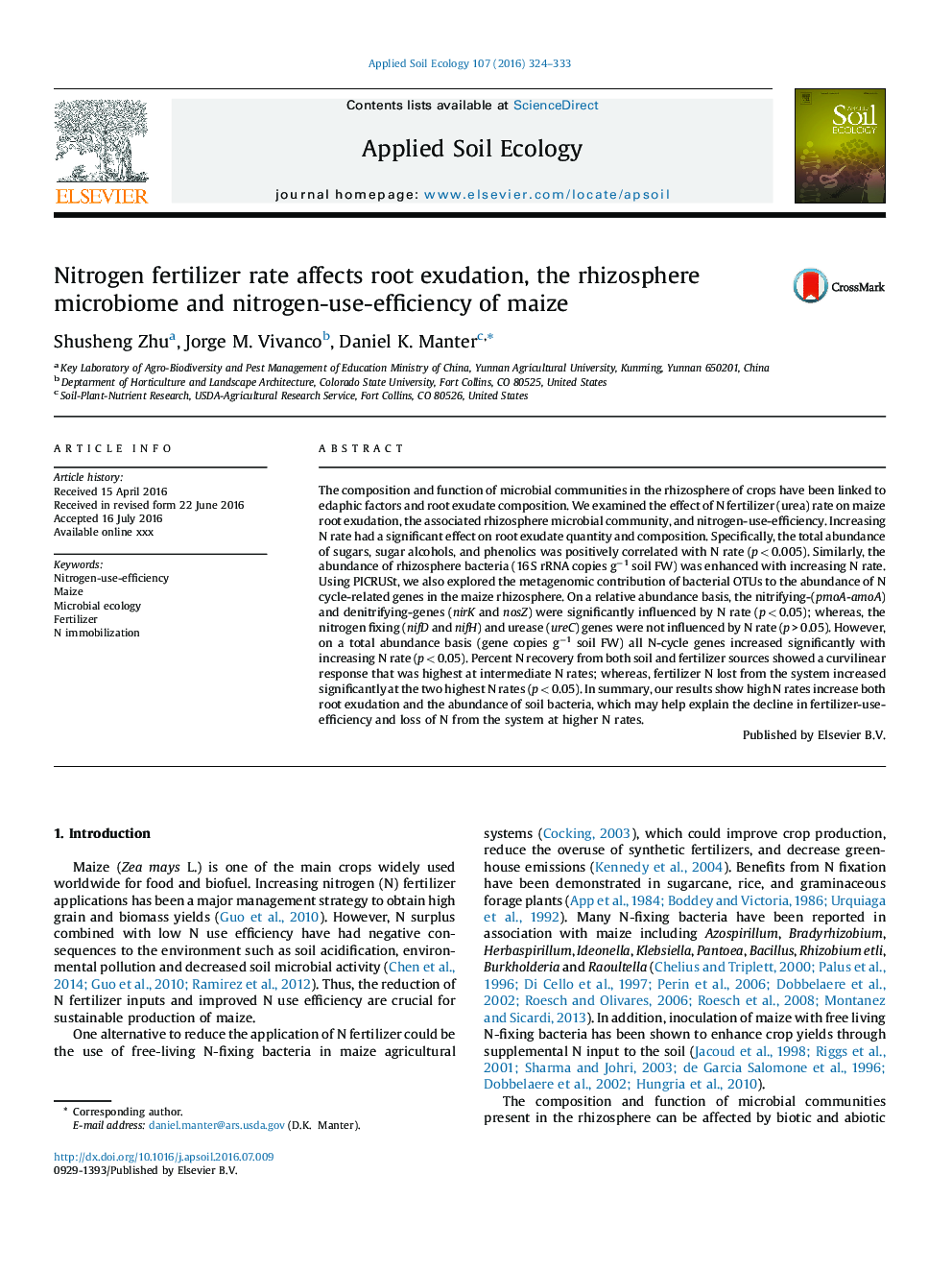| Article ID | Journal | Published Year | Pages | File Type |
|---|---|---|---|---|
| 6297654 | Applied Soil Ecology | 2016 | 10 Pages |
Abstract
The composition and function of microbial communities in the rhizosphere of crops have been linked to edaphic factors and root exudate composition. We examined the effect of N fertilizer (urea) rate on maize root exudation, the associated rhizosphere microbial community, and nitrogen-use-efficiency. Increasing N rate had a significant effect on root exudate quantity and composition. Specifically, the total abundance of sugars, sugar alcohols, and phenolics was positively correlated with N rate (p < 0.005). Similarly, the abundance of rhizosphere bacteria (16 S rRNA copies gâ1 soil FW) was enhanced with increasing N rate. Using PICRUSt, we also explored the metagenomic contribution of bacterial OTUs to the abundance of N cycle-related genes in the maize rhizosphere. On a relative abundance basis, the nitrifying-(pmoA-amoA) and denitrifying-genes (nirK and nosZ) were significantly influenced by N rate (p < 0.05); whereas, the nitrogen fixing (nifD and nifH) and urease (ureC) genes were not influenced by N rate (p > 0.05). However, on a total abundance basis (gene copies gâ1 soil FW) all N-cycle genes increased significantly with increasing N rate (p < 0.05). Percent N recovery from both soil and fertilizer sources showed a curvilinear response that was highest at intermediate N rates; whereas, fertilizer N lost from the system increased significantly at the two highest N rates (p < 0.05). In summary, our results show high N rates increase both root exudation and the abundance of soil bacteria, which may help explain the decline in fertilizer-use-efficiency and loss of N from the system at higher N rates.
Related Topics
Life Sciences
Agricultural and Biological Sciences
Ecology, Evolution, Behavior and Systematics
Authors
Shusheng Zhu, Jorge M. Vivanco, Daniel K. Manter,
